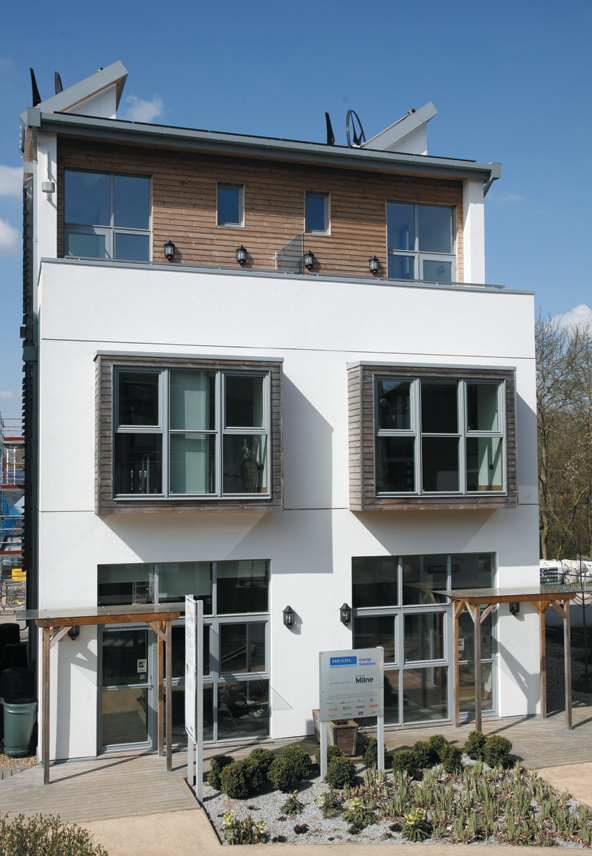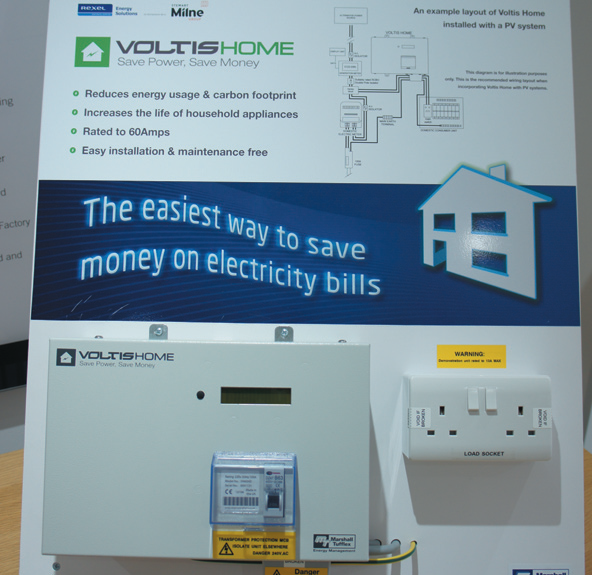 Due to the numerous factors that have to be considered when planning a home of the future, the electrical contractor has had to evolve into more of an energy advisor. Here, Mark Fiddy of Newey & Eyre offers some insight into why it is important for electrical contractors to take action for tomorrow, today
Due to the numerous factors that have to be considered when planning a home of the future, the electrical contractor has had to evolve into more of an energy advisor. Here, Mark Fiddy of Newey & Eyre offers some insight into why it is important for electrical contractors to take action for tomorrow, today
Lighting, HVAC, home automation and voltage optimisation are just some of the technologies that will be integral in helping to shape the house of tomorrow.
As we move rapidly towards much greener and energy efficient lifestyles, the green credentials of the British home are becoming even more important. To place this into context, in 2009 buildings accounted for approximately 43% of all UK carbon emissions. As part of its green agenda, the government’s plan is for all new build houses to be zero carbon from 2016, meaning energy efficiency will have a significant impact on the layout of a home and the way in which homes use energy.
 Therefore, the rise of intelligent devices and green technologies are set to revolutionise home living in the not so distant future and as such, the onus is on the electrical contractor who must play a major role in this transition by developing in-depth knowledge of the latest green products and solutions.
Therefore, the rise of intelligent devices and green technologies are set to revolutionise home living in the not so distant future and as such, the onus is on the electrical contractor who must play a major role in this transition by developing in-depth knowledge of the latest green products and solutions.
A complex situation
However, with a constant stream of technological advances, new regulations and complex cost calculations to consider, it can be hard to grasp the full scope of the ‘home of the future’. However, help is on hand with the Sigma House at BRE in Watford – a demonstration development offering an insight into the house of tomorrow via the property construction and installation of energy efficient products, showing the full scope of product possibilities that are now available.
So, what can an installer expect to see at the Sigma Home? Naturally, solar PV has a part to play with one of the world’s most sophisticated PV systems in operation. The modules of the SANYO HD-Series make use of anti-reflection glass which reduces the loss caused by reflection and diffusion of sunlight, thus optimising efficiency even further – an affect especially useful in areas with low irradiation.
At the centre of the solar set-up is a solar power system responsible for converting direct current produced by the modules into grid compliant alternating current. Present at the Sigma House is SMA’s Sunnyboy – an inverter with a proven 99% efficiency rating.
Also of key importance is hot water, and it is in this area that a solar thermal system from Ideal is installed on the building’s roof whereby solar radiation is collected from the sun and transferred into a heat absorbent fluid. The result is an average delivery of up to 60% of the home’s annual domestic hot water.
Getting connected
The devices installed in ‘the home of future’ not only offer energy efficiency but also provide a greater connectivity between the homeowner and machines. Two building control systems are in use within the house. First there is the Honeywell Dianemo system enabling total control of home entertainment, security, lighting and the general home environment. In addition, the house features the Synco living home automation system designed to control and operate lights, blinds and HVAC products to suit the occupant’s individual needs.
These systems put the homeowner in complete control, enabling easy monitoring and managing of energy usage in virtually every respect and from anywhere in the world for ultimate efficiency.
The vast array of LED lighting that is currently available is also on show at Sigma House – key suppliers include GE, JCC, Concord, Osram, Kingfisher, Promenade and Tubello, offering as much as 80% energy saving compared to a standard light lamp and a durable lifespan.
Adding to the building’s green credentials, a Marshall-Tufflex voltage optimiser reduces the incoming voltage by nine percent, delivering the optimum voltage for all CE marked electrical equipment, thereby reducing the power consumption and wear and tear. This equates to an average saving in the region of ten percent, thus further reducing the electricity bill and carbon footprint.
For the heating and hot water at Sigma House, the latest generation of Dimplex air source heat pumps extract renewable heat from the air, helping to reduce domestic heating running costs by around 30% compared to an existing oil system.
In addition, a Vent-Axia heat recovery unit is in place, whereby an efficient heat exchanger recovers up to 75% of the heat from the extracted air which would otherwise be lost, and transfers this to intake air. This reduces heating bills even further whilst extracting cooking odours and steam.
Ongoing innovations
Further technologies at Sigma House include electric vehicle charging, smart metering and as an evolving project, the house will be adapted accordingly as green technologies change and progress.
No longer is the ‘home of the future’ a distant vision – it is fast becoming an emerging reality driven by increased legislation and consumer gravitation. For the shrewd installer then, the time is right to take action for tomorrow today by utilising resources, such as Sigma House, in order to help their customers make their green dreams a reality.
Newey & Eyre
T: 0800 783 6909

